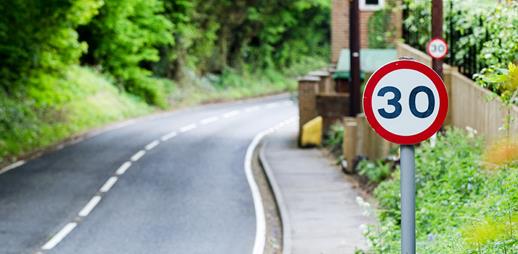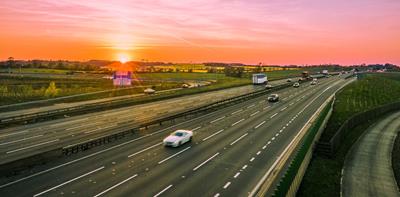
When you’re driving somewhere in a hurry, it can be tempting to drive that little bit faster.
In 2017, nearly half (48%) of cars exceeded the speed limit on motorways, according to figures from the Department for Transport. Motorists push their luck on local roads too. The research found just over half (52%) of drivers speeding in 30mph zones, while in 20mph zones a massive 86% of cars exceeded the speed limit.
Not worth the time saved
Of course, travelling faster means you cover ground more quickly. But breaking speed limits, which are there to keep people safe, will put you at greater risk of having a serious accident. Exceeding the speed limit was reported as a contributory factor for 1 in 6 road deaths (17%) in 2014, according to The Department for Transport.
And it won’t save you that much time either. Based on research showing the vast majority (88%) of motorway trips are less than 50 miles, Richard Llewellyn from Edinburgh Napier University calculated that driving continuously at 80mph instead of 70mph, you would only save five minutes. That isn’t even long enough make a decent brew.
Speed is expensive
Not only does speeding save very little time, it is also disproportionately expensive. According to the Money Advice Service, driving at 80mph can use up to 25% more fuel than driving at 70mph.
On local roads, accelerating quickly and braking heavily can cost you both at the pump and at the garage by wearing through tyres and brake pads. Driving in a more fuel efficient way will cost you very little time, but as our recent work with the Blue Lamp Trust shows, it can save you hundreds of pounds a year.
Speeding is dangerous
Trying to save time isn’t the only reason people speed. According to a report by road safety charity Brake, other common reasons include not paying attention to the limit, assuming it’s safe to speed on quiet roads or speeding simply because others are too. Brake also found that people believed their judgment of a safe speed was more appropriate than the limit, didn’t care what the limit was, or just enjoyed the buzz of driving quickly.
But speeding drivers have less time to react to what is happening around them, and it takes longer for the vehicle to stop.
For example, road safety charity RoSPA says that at 30mph you’re travelling about three car lengths every second. That means in the blink of an eye you may fail to see the brake lights of the car in front, or during a short glance away from the road you could miss someone stepping out from behind a parked car.
Even in good conditions, speeding at 35mph in a 30mph zone adds an extra 21 feet to your stopping distance. So it might not come as a surprise that around two-thirds of crashes in which people are killed or injured occur on roads with a speed limit of 30 mph or less.
Dangerous Roads Map
Find out the safety risk for the roads that matter to you.
Tips for avoiding speeding
Whether it’s in an urbanised 30mph zone or on the motorway, RoSPA has ten simple tips to avoid speeding:
- Check your speed regularly, especially when leaving high speed roads
- Know the limits – look for signs, especially at junctions
- Assume lamp posts mean 30mph, but still watch for signs that say otherwise, because the limit could be 20mph
- Remember, they are speed limits, not speed targets
- “20s plenty” when kids are about – and may even be too fast
- Try no higher than 3rd gear in a 30mph limit
- Recognise what makes you speed - keeping up with traffic, overtaking or being tailgated
- Concentrate – distracted drivers miss speed limit signs
- Slow down when entering villages
- Give yourself time – arriving safely is more important than arriving quickly
Go to Solved to read more about road safety.
You can find out more about our car insurance here.

